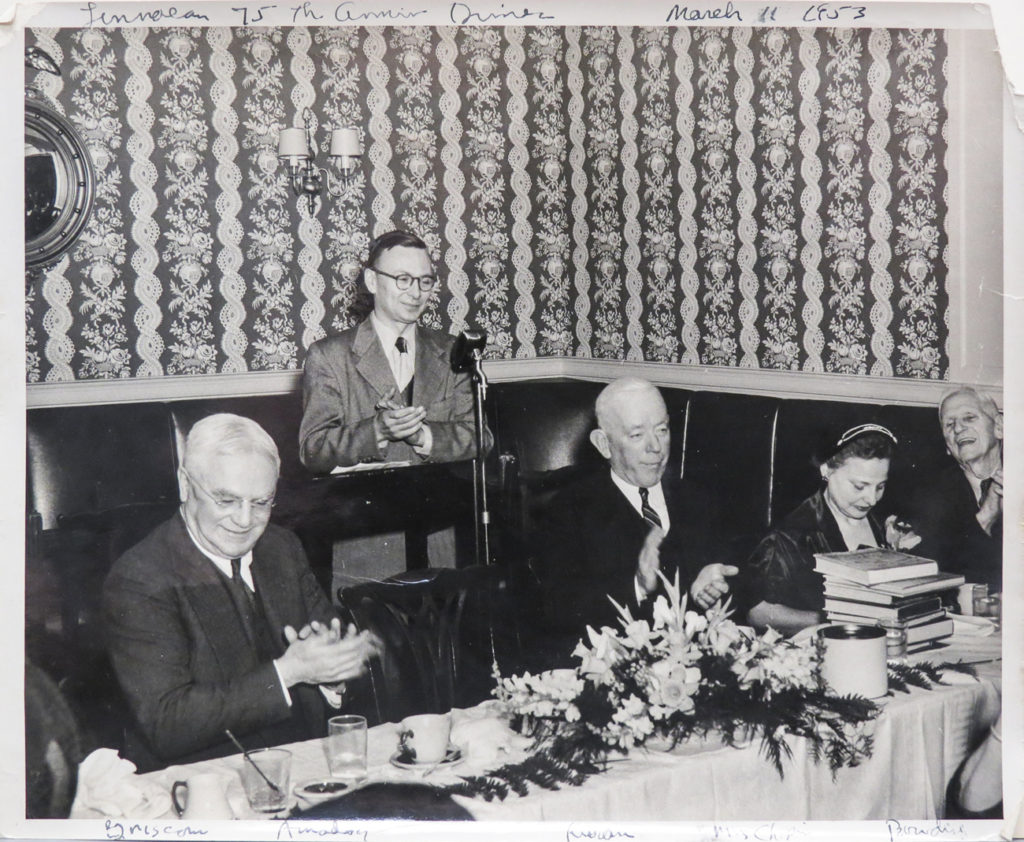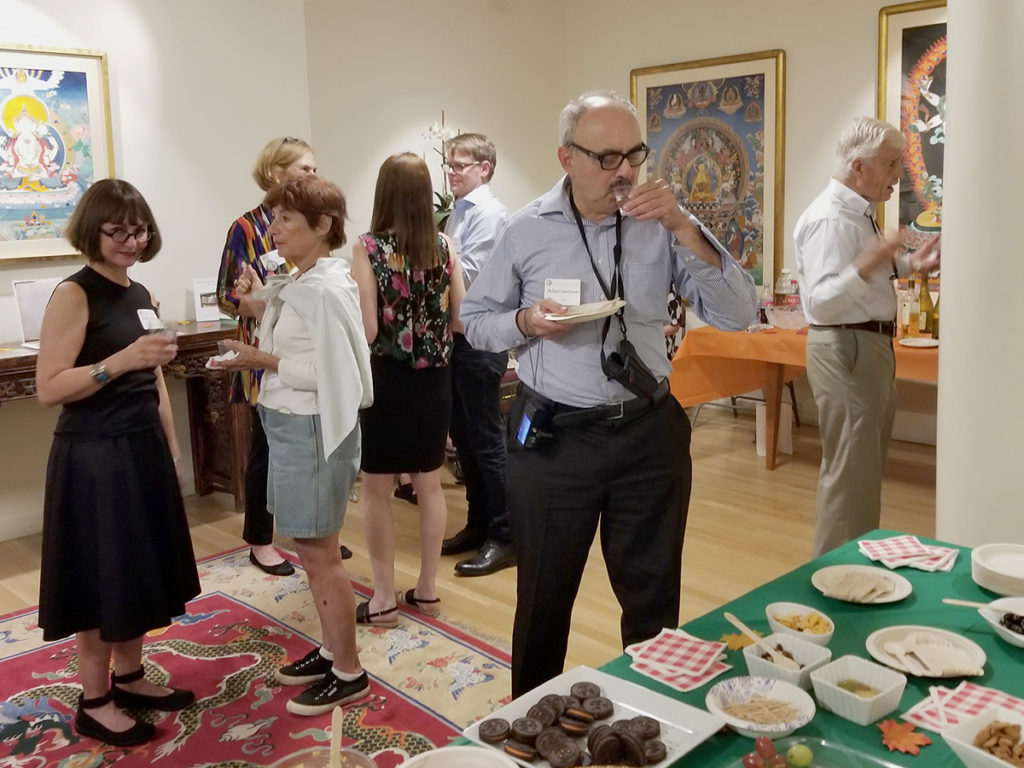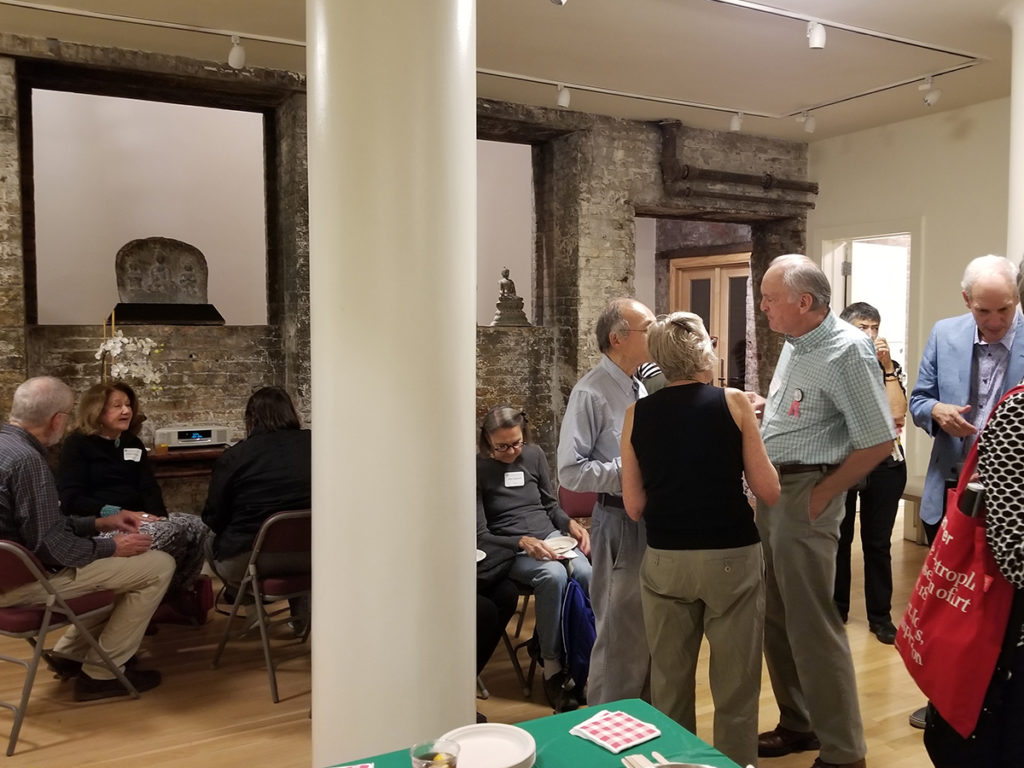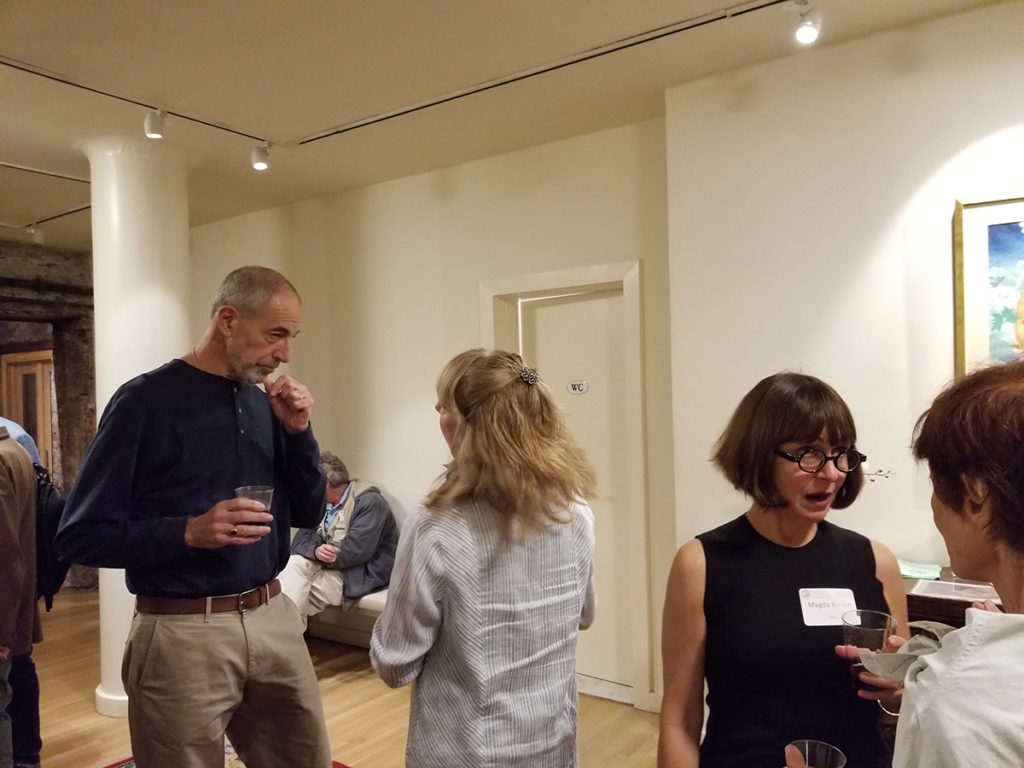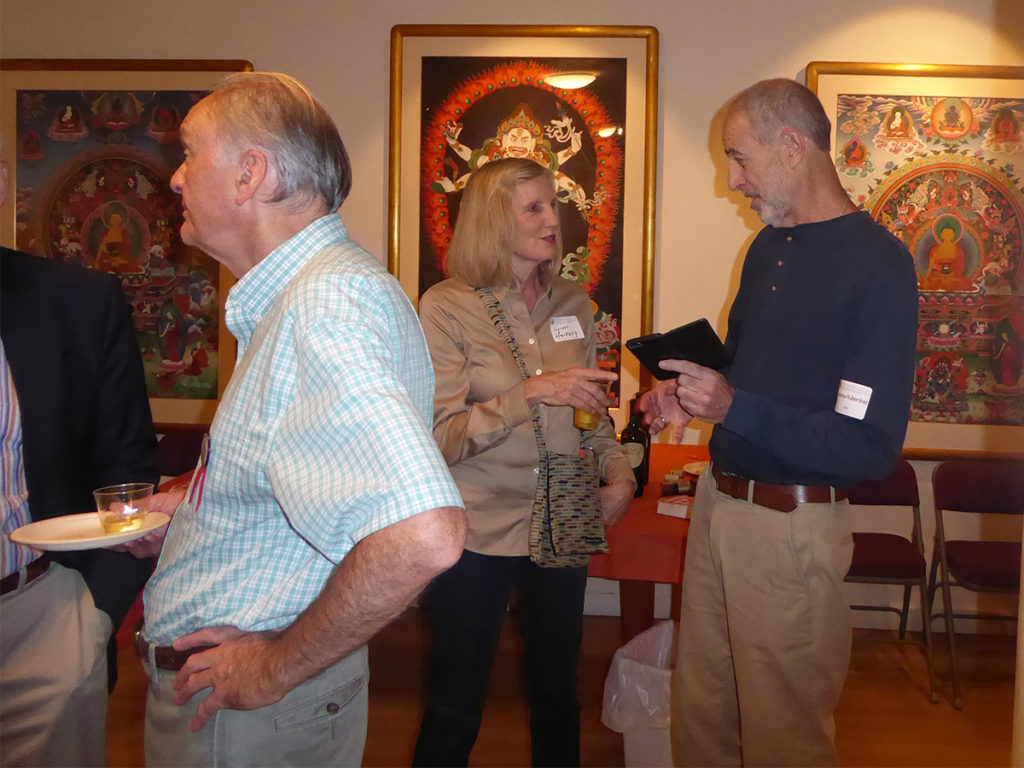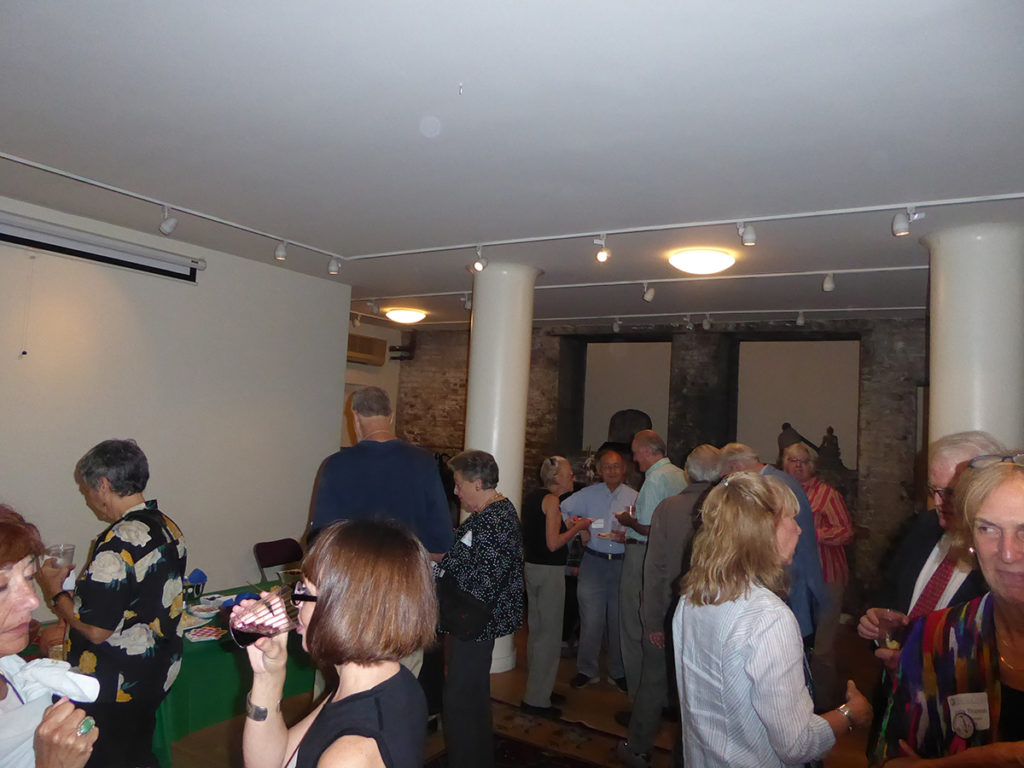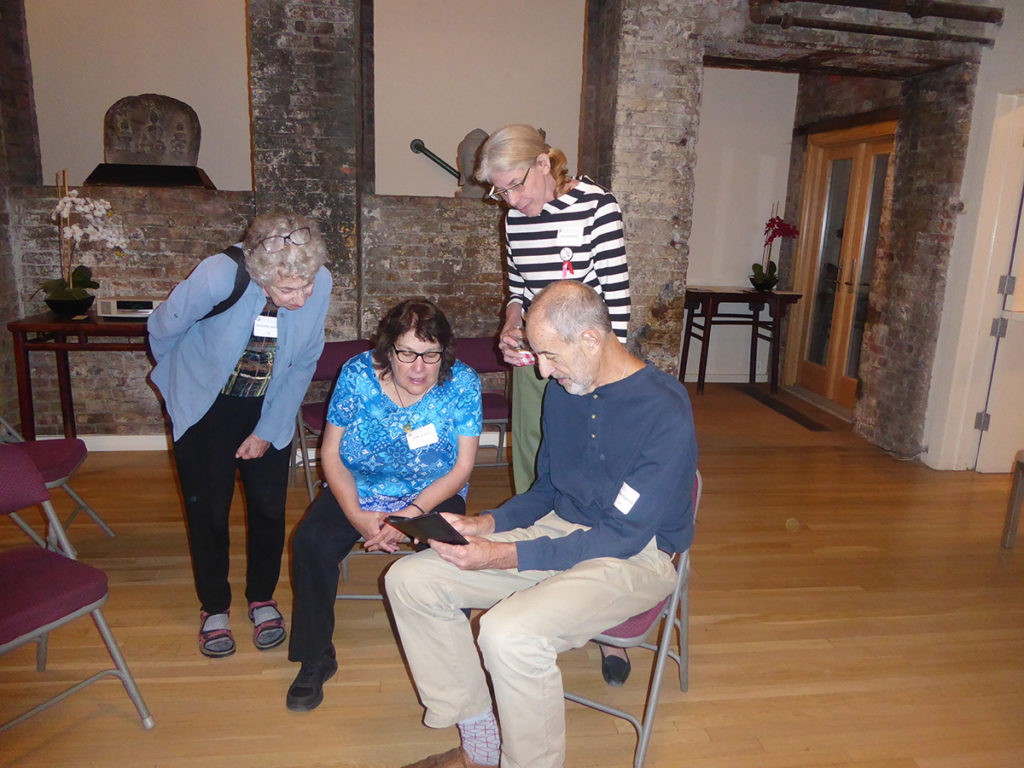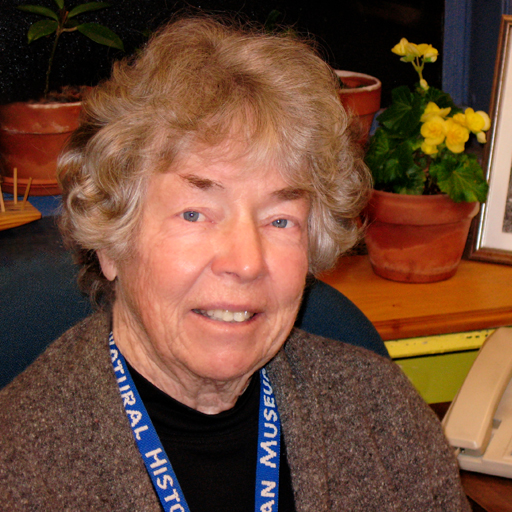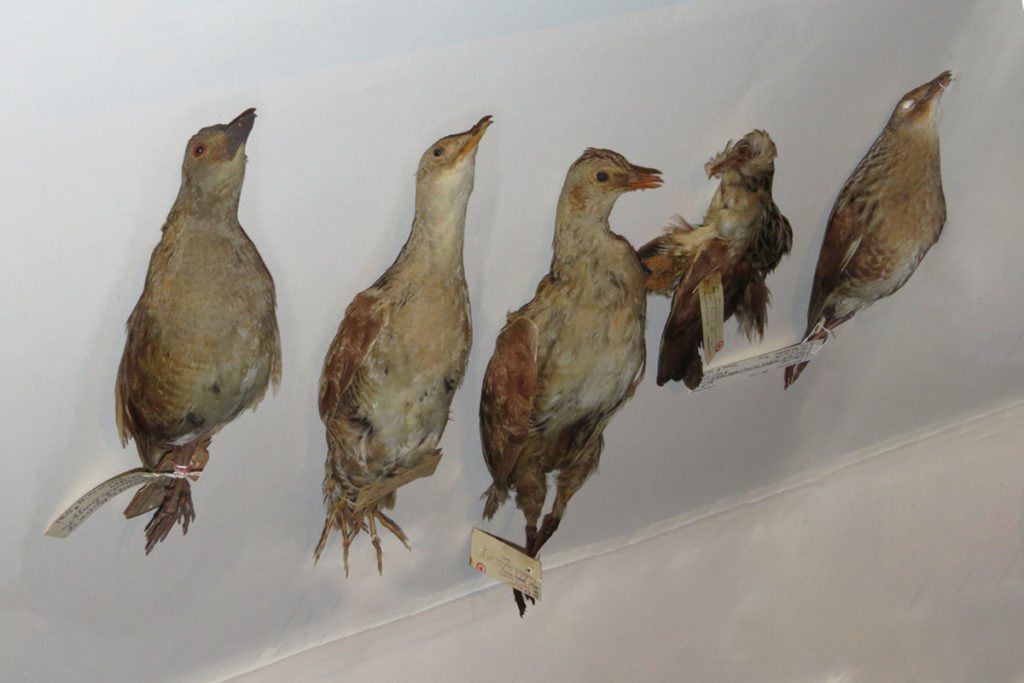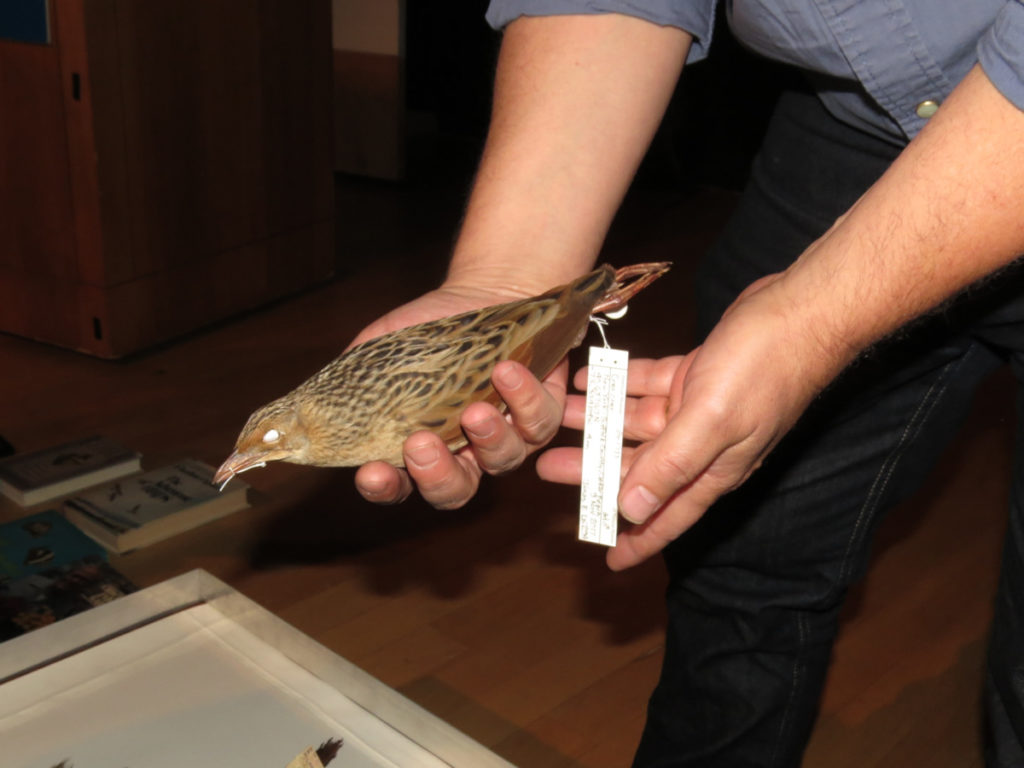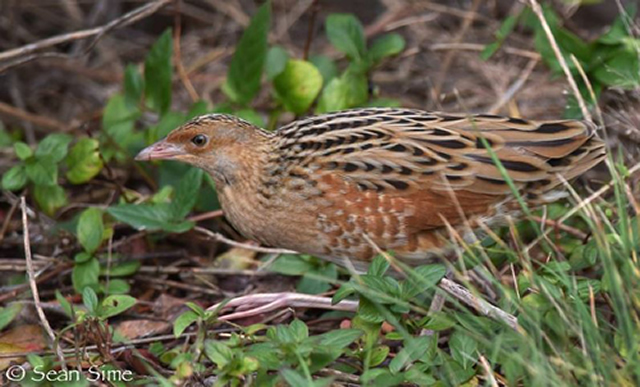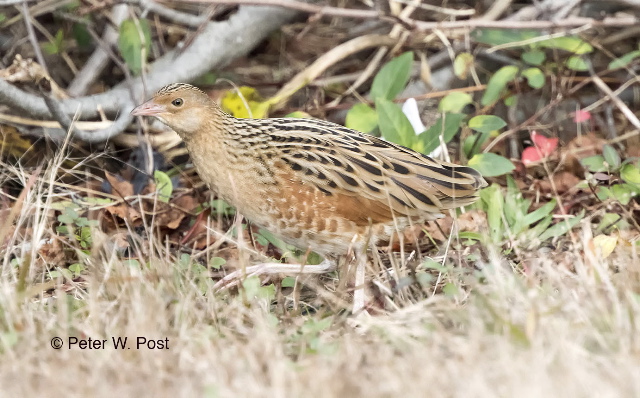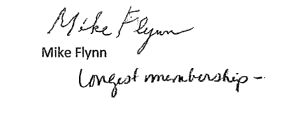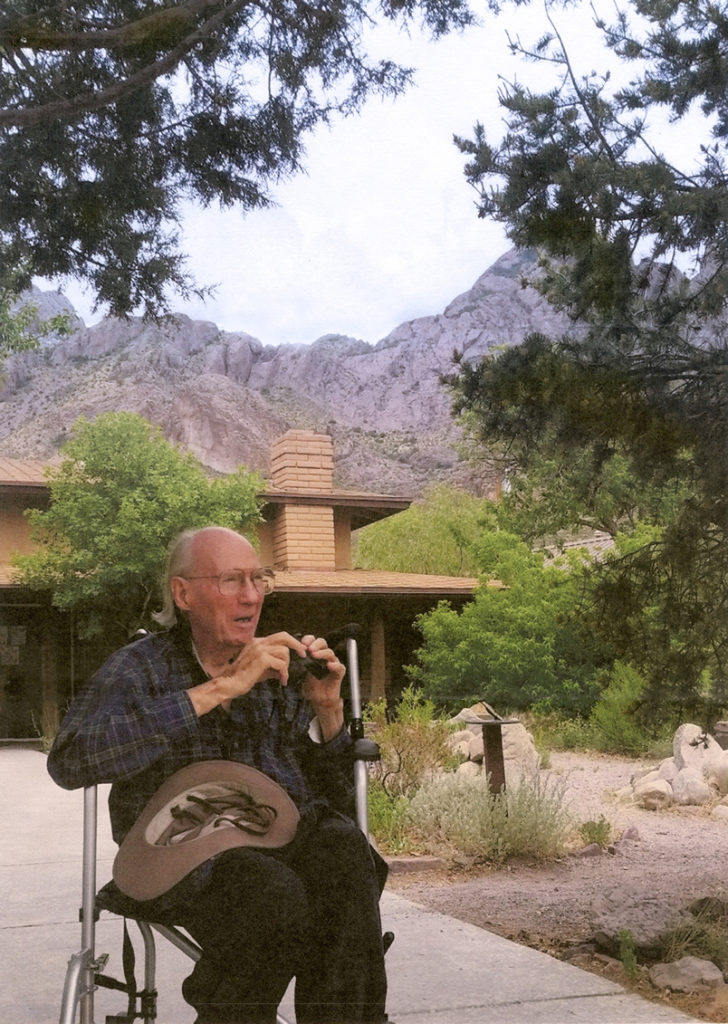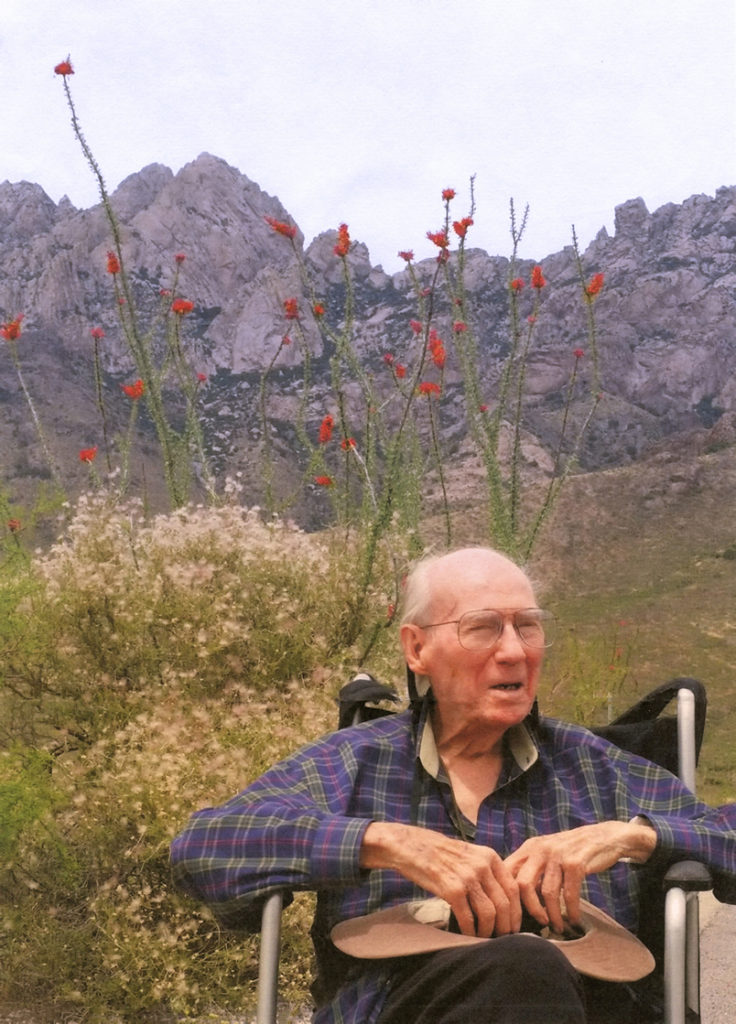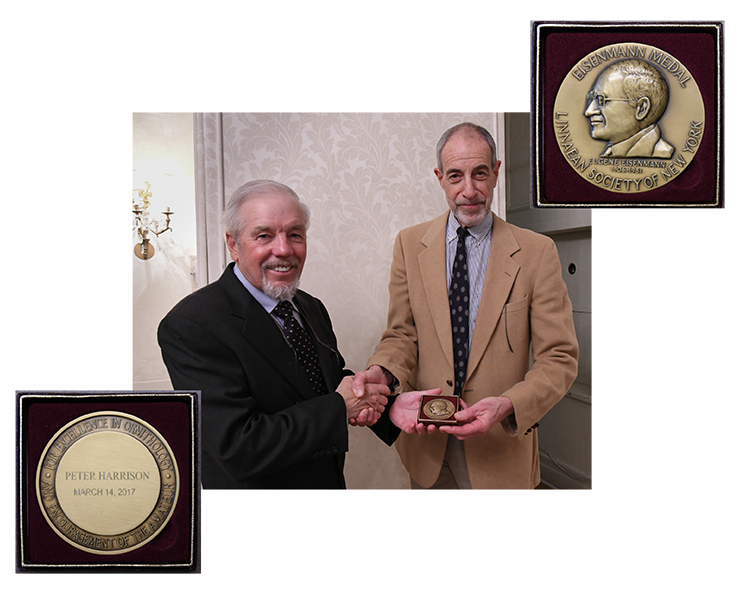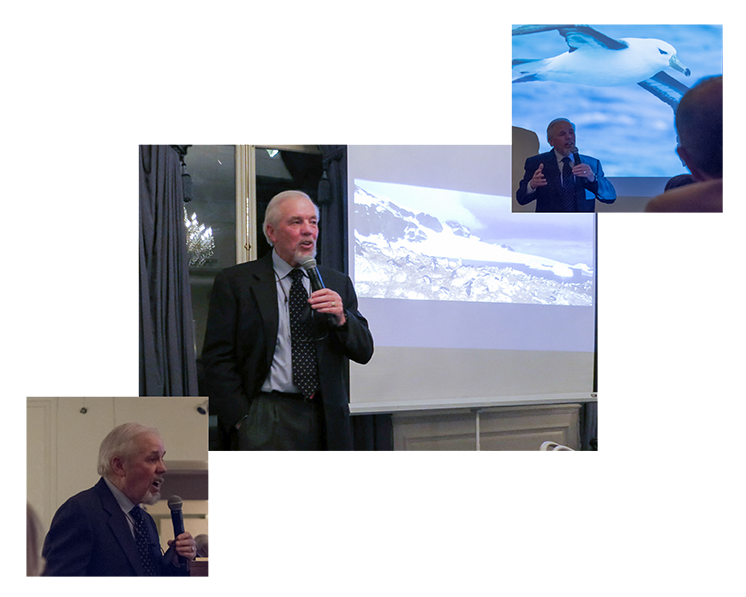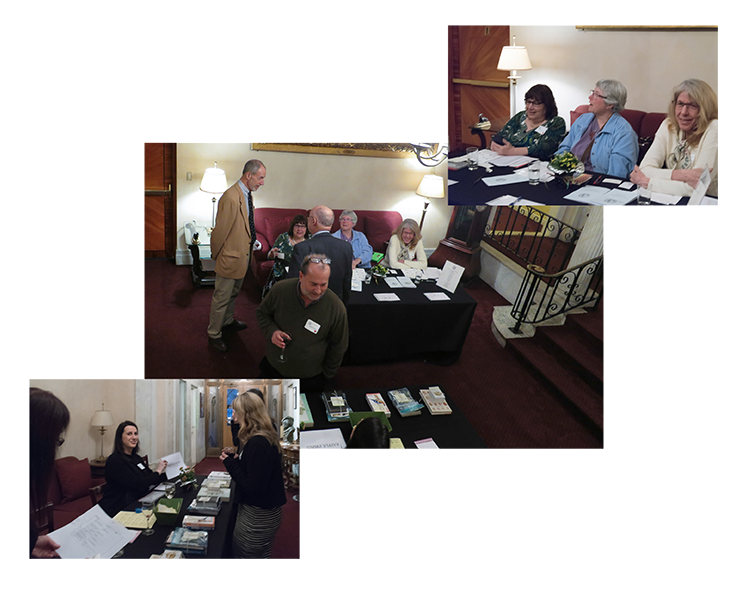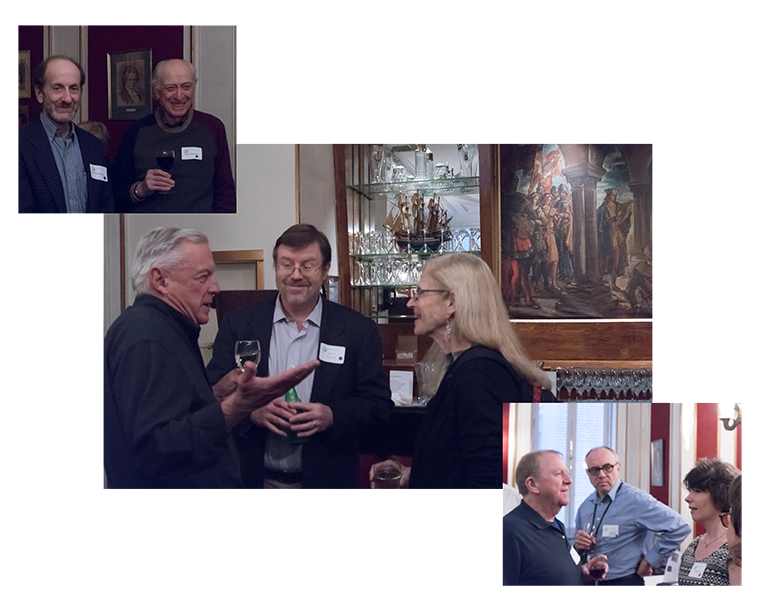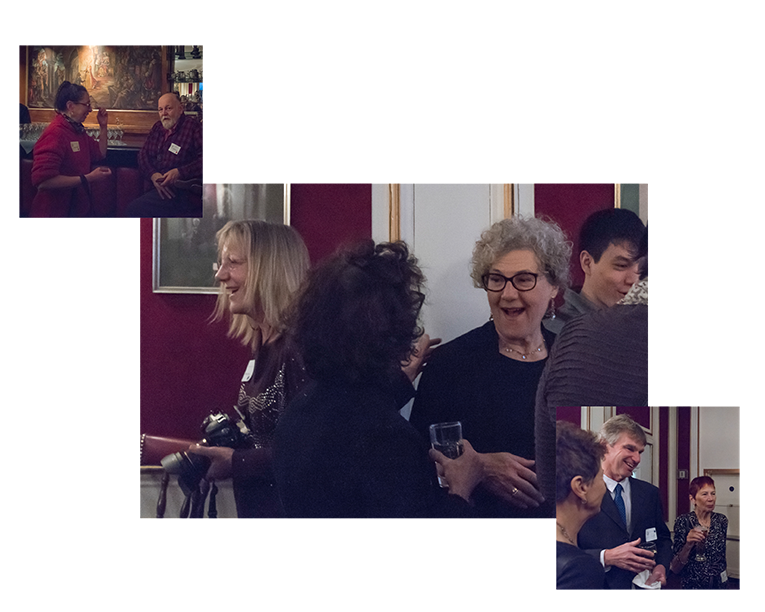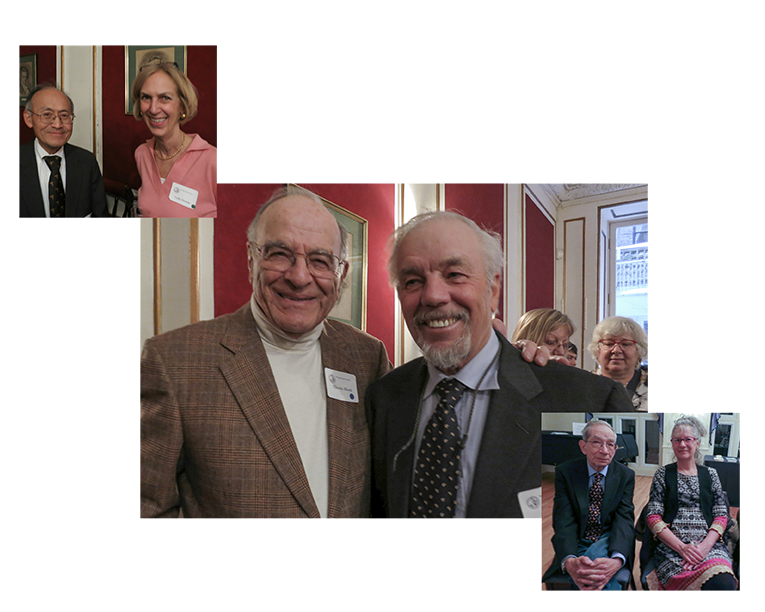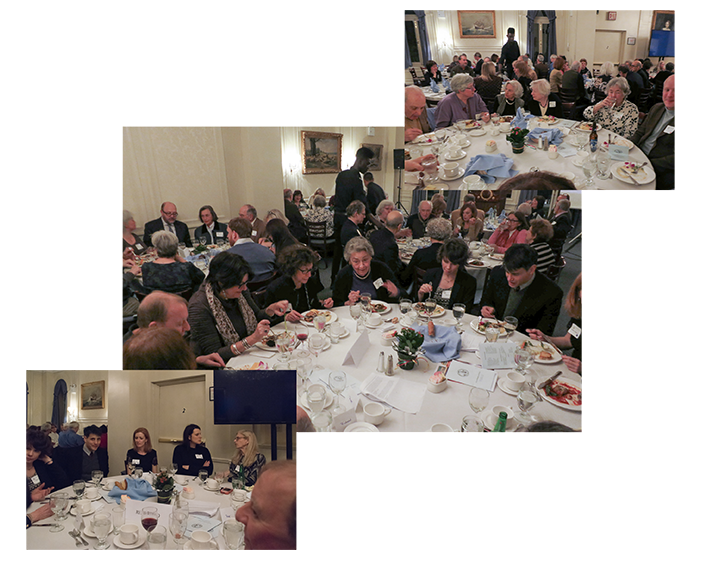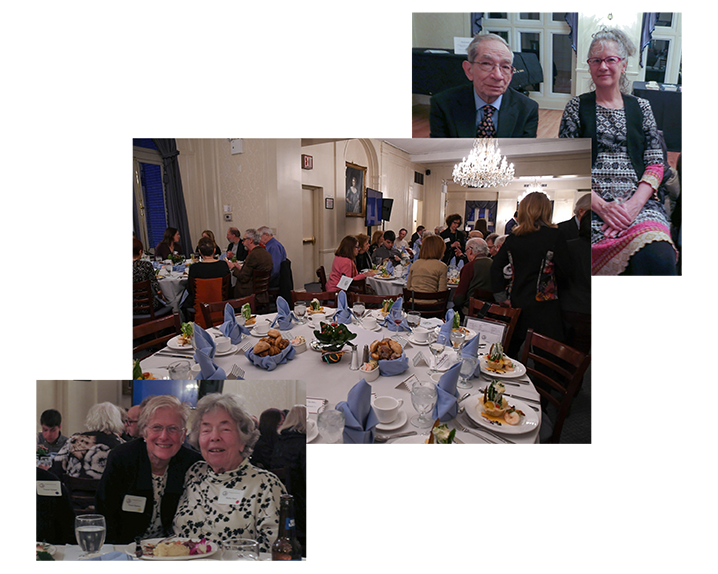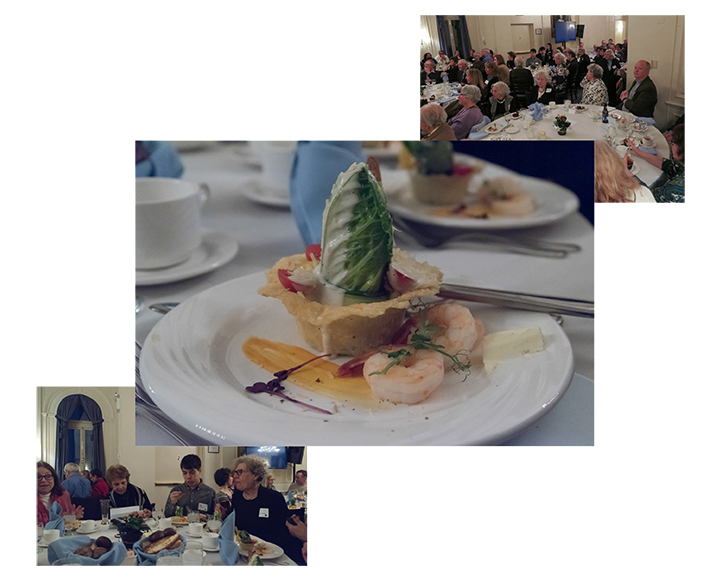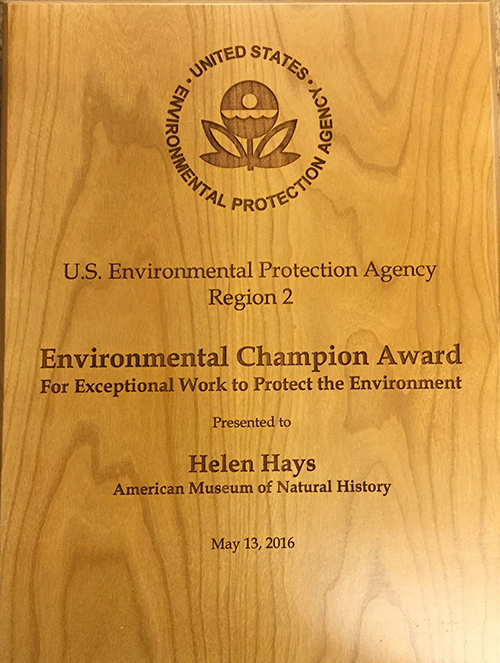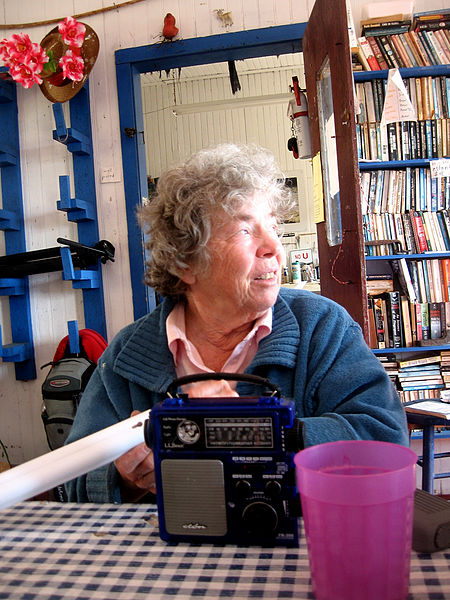1915 and 1956 Annual Dinner
1914 & 1956 Annual Dinner Photographs from the Archives
In the 1914 photo #20 is Ludlow Griscom. In the biography of Griscom, Dean of the Birdwatchers by William E. Davis, Jr. there is a photo of Griscom from 1910 that you can compare. In the same book there is a photo of the AMNH Ornithology Department staff taken in 1924. Comparison indicates that photo to the 1914 Linnaean dinner photo, #14 is probably Waldron DeW. Miller and #21 Jonathan Dwight, Jr. (in 1914 Dwight was Society president and Griscom secretary so that table is liekly the head table). Probably #4 is Frank Chapman, #7 Robert Cushman Murphy, #15 Charles O’Brien and #16 Elsie Naumburg.
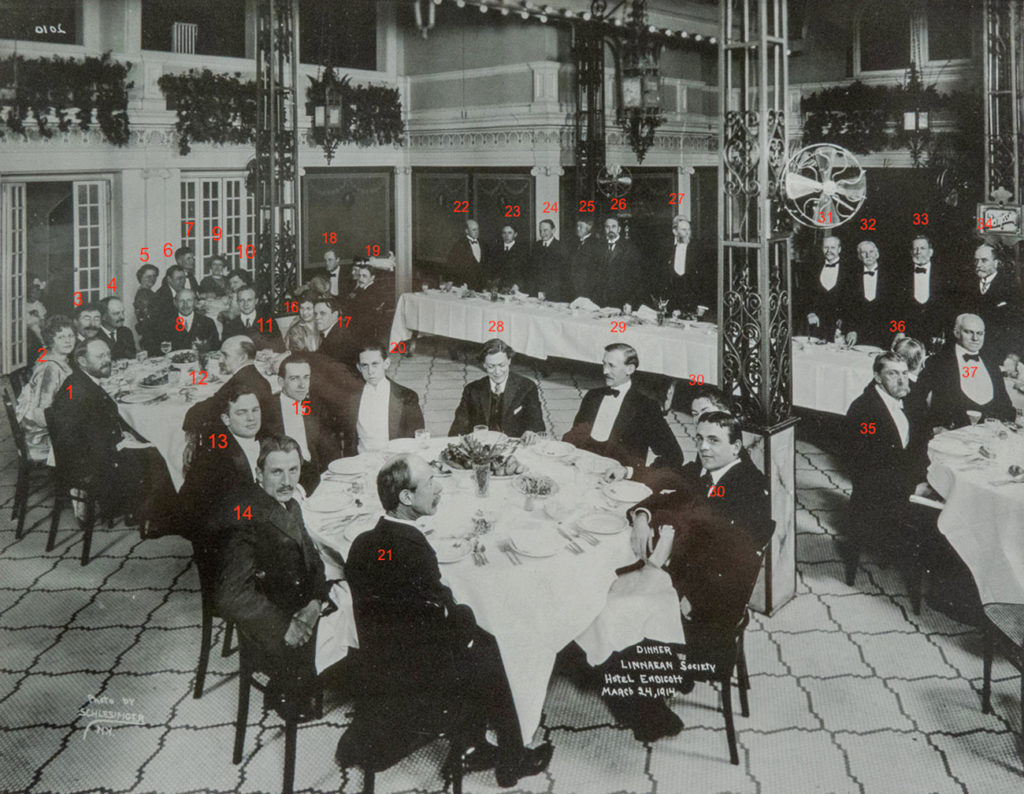
The 1953 picture below is labeled left to right Ludlow Griscom, Dean Amadon (at podium), John Kieran, Ruth Chapin and Beecher S. Bowdish, a longtime Society member.
